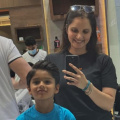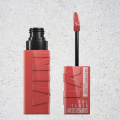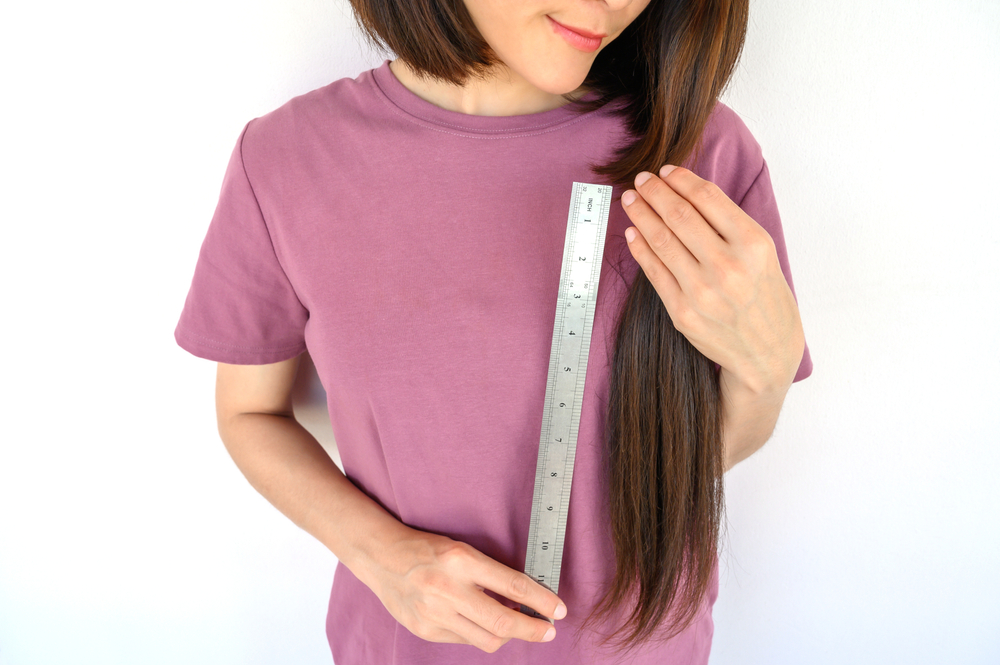A Guide on How to Cut Your Own Hair at Home: 5 Easy Techniques
Become your own hairstylist! Grab scissors, roll up your sleeves, and follow our simple guide on how to cut your own hair at home. Get ready for a new look!
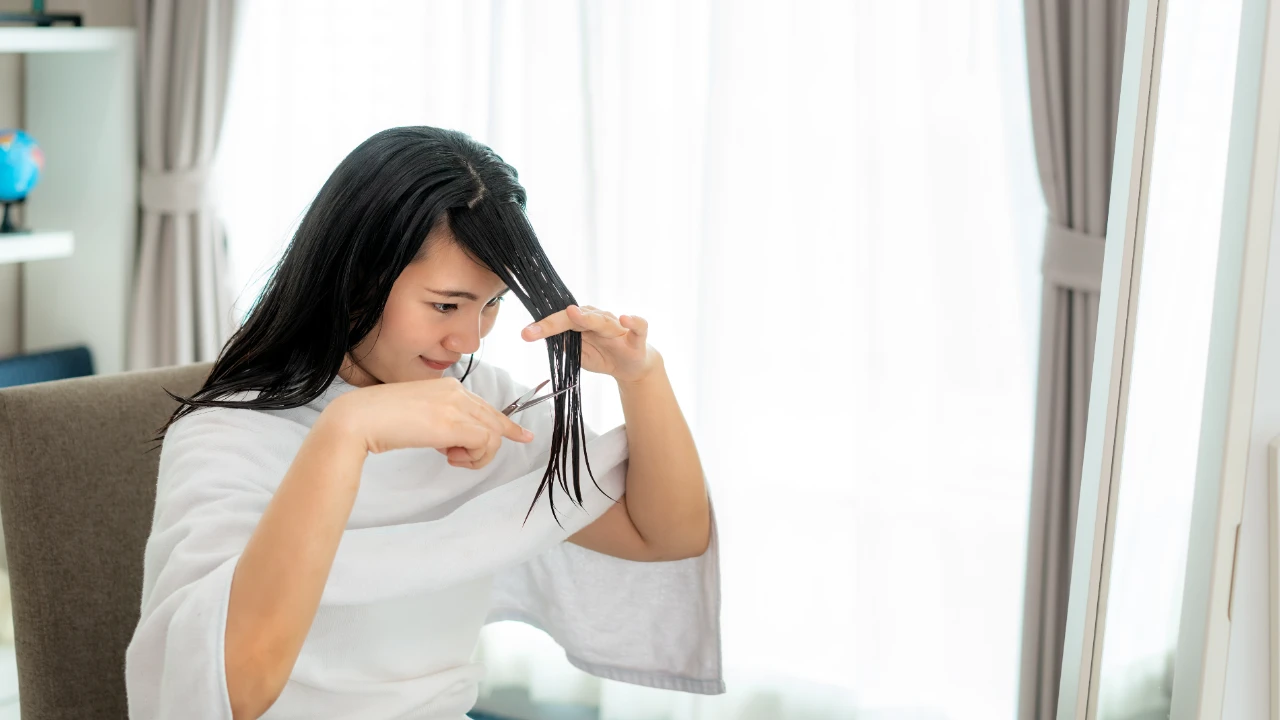
Either blame it on the hectic schedule or pin the charge on budgetary constraints — sometimes, a trip to the salon just isn’t feasible. But that doesn't mean you must survive with a messy and shaggy hairstyle. By taking assistance with the right tools and techniques, you can give yourself a decent haircut, and that too, in the comfort of your own home. This article will familiarize you with all the necessary techniques of how to cut your own hair in the comfort of your own space. However, understand that the key to achieving a good cut or a simple trim is ‘patience.’
Typically, when cutting hair at home, achieving a polished and sleek blunt cut can be more difficult compared to layered styles. As a result, layered cuts are often recommended. From tools to techniques, we'll cover everything you need to know to achieve a polished and professional-looking cut. So, continue scrolling to turn into your very own personal hairdresser.
How to Cut Your Own Hair: Achieve Max Styling With 5 Simple Techniques
1. The Low Ponytail Method
- To achieve this cut, start with damp hair. Make sure that you have freshly washed hair. Make them wet by spraying a generous amount of water.
- Separate your hair from the mid, ensuring two halves on both sides.
- Now, take a rubber band and secure a low ponytail. There shouldn’t be any bumps, and the ponytail should be neatly secured in the middle of the back of your head.
- Add another elastic hair tie to your hair, positioning it slightly above where you intend to cut.
- Cut the hair that is below your second rubber band. Trim your hair in small, gradual snips instead of cutting the whole section all at once.
- Once done, remove the rubber ties and open up your hair. Check the symmetry and if you don’t find evenness in certain areas, repeat the process.
2. The Twist Method
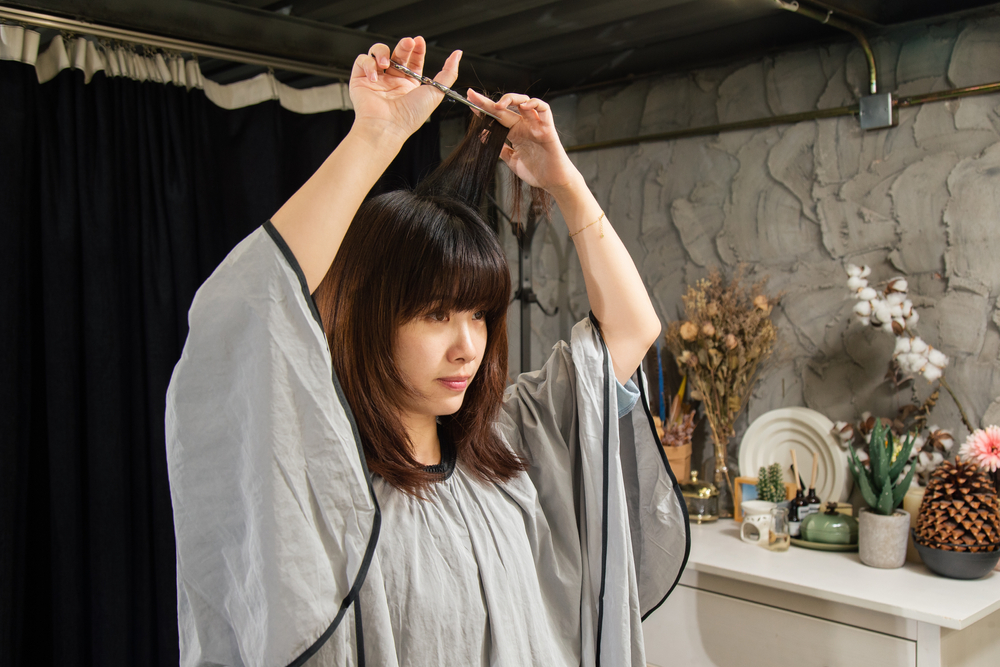
- To begin, brush all your hair upward, gathering it tightly at the very top of your head, and twist it tightly.
- Using scissors, cut off as much hair as you desire. To create layers, determine where you want the shortest layer to fall by pinching a section of hair from the front hairline and pulling it back to where you will twist your hair.
- Now, run the scissor and cut the lengths. Comb your hair nicely as you leave them open. Style them as you wish.
- This technique works well for creating an angled haircut, particularly an inverted bob. Always remember that this technique of home haircut doesn't chop off much length. However, if you opt to cut a substantial amount of hair at once, it can lead to excessive layering or can decrease the volume of your hair. So, this method might not benefit those with fine or thin hair.
3. The High Ponytail Method

- Turn your head upside down and start by brushing in an upward position and gather it into a ponytail near the crown of your head. Secure it into a tight ponytail and ensure no hair is left open.
- Now, take another rubber band and tie it below the first one, basically where you intend to trim your hair.
- Make small gradual cuts and once the section is cut, remove the hair tie and brush your hair normally.
- Once the cut is done, it’s time for some final finishing touches. If your hair still looks a little uneven, repeat the process and trim any extra hair.
- This method will result in a haircut with dense layering on the top section of your head.
4. The Front Ponytail Method

- Since this is a dry cut, you don’t have to wet your hair.
- Turn your head upside down and gather your hair in a ponytail at the center of your crown using a brush.
- Determine the desired length for the first level of layering. Do you want bangs that reach your eyebrows, or do you prefer chin-length flicks or layers? Measure the distance and secure the hair that needs to be cut, holding the section between the index and middle finger.
- Grab a scissor and slowly trim the lengths between the fingers.
- Alter your scissors' grip, then trim the blunt end of the ponytail. Keep snipping until the hair appears like a fluffy, graduated shaving brush with no defined lines.
- Comb through your hair as you release the ponytail gently.
- This is a great at home hair cut if you want layers that frame your face.
5. Two-Pigtails Method
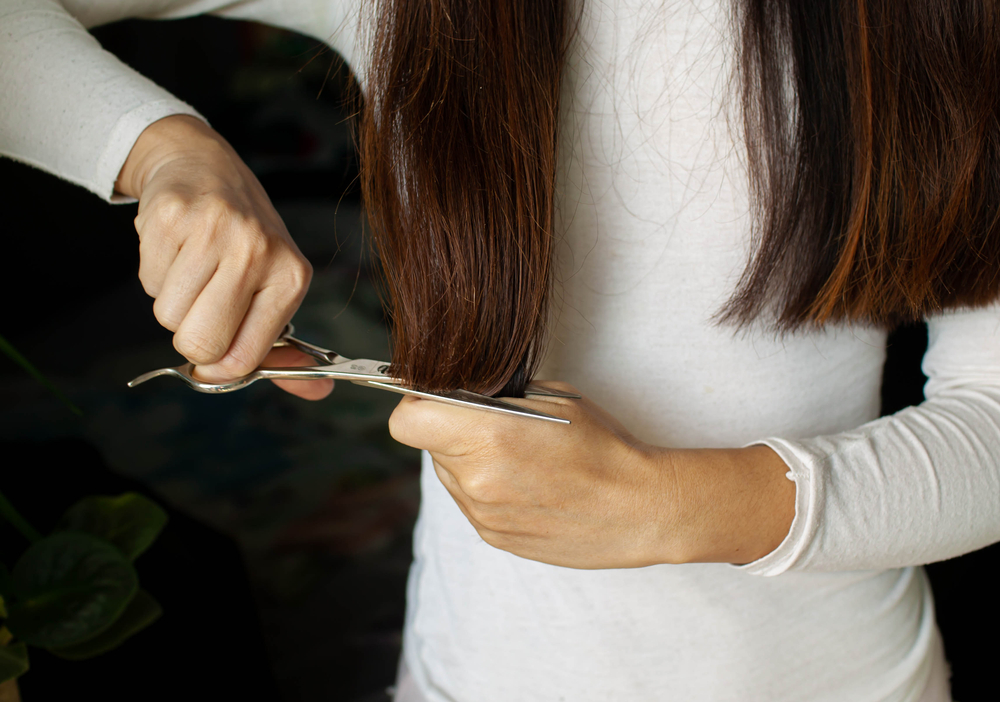
- First, brush your hair and divide it to create a center parting. You can use a fine-toothed comb. Use a mirror to make sure the parting is straight, and the hair is sectioned into two equal parts.
- Now, take a rubber tie and secure two low ponytails from each half of your hair (also known as pigtails). Make sure that they are positioned behind and below the tip of your ears.
- To secure each pigtail firmly, hold the hair a few inches below the elastic band and divide it into two equal sections. Gently pull each section away from each other in opposite directions so that the elastic band moves closer to the base of your head.
- Now, decide the length you wish to cut, and then gently pull the rubber band down for demarcation.
- Using scissors, cut your hair below each elastic band on both sides. Avoid cutting straight across to prevent a choppy look. Instead, hold the scissors at a 45-degree angle and cut upwards to achieve a more natural appearance.
- Now, remove the rubber ties and brush your hair. Curl, straight, or style them according to your liking.
- This cut is the best way to cut your own hair for those with bouncy or voluminous hair. Those with fine or thin hair shouldn’t try this cut, as it takes off a significant amount of hair.
A 10-Step Guide on How to Trim Your Own Hair

Here are the basic and general guidelines to keep in mind while trimming your own hair at home:
- Start by washing and drying your hair.
- Brush your hair to remove tangles and knots.
- Divide your hair into sections and clip them out of the way.
- Take one section of hair at a time and comb it straight.
- Twist the ends of the section you are working on.
- Trim off the jagged ends that stick out.
- Move on to the next section and repeat until you have trimmed all sections.
- Check the length of your hair and make any further trims if necessary.
- Blend the sections by combing through your hair with a wide-tooth comb.
- Style your hair as desired.
How to Give Yourself a Haircut?

Giving yourself a home haircut might be a little intimidating, but with the help of patience and simple techniques, you can easily nail the process. Here are some basic guidelines that you must follow while chopping your hair into a very basic at-home haircut.
- Start with clean, dry hair. If you need to wash your hair, do it a day before so it has time to dry completely.
- Use sharp scissors made specifically for cutting hair. Avoid using regular household scissors as they can damage the hair.
- Use clips or hair ties to section your hair and keep it out of the way while you work on one area at a time.
- Cut small sections of hair at a time. It's best to start with less and gradually cut more rather than taking off too much at once.
- Cut in a well-lit area with a mirror in front of you. Use a second mirror or ask someone to help check the back of your head.
- Take your time and be patient. It's better to go slow and make minor adjustments than to rush and end up with an uneven or unflattering cut.
Don’t hesitate to seek the help of a professional if you're not comfortable with the process or if you want a more complex or precise haircut.
Conclusion
We hope that you have now got your answer on how to cut your own hair at home. Though the process of at-home trimming or cutting might seem daunting initially, it requires a bit of practice and patience to master this art. Additionally, it can be a great time and money saver once you get the hang of it. Following the guidelines outlined above, you can confidently achieve the desired haircut without spending much money at a salon. Understand that this process comes with a learning curve. Only with patience and persistence can you gradually become confident and proficient. Don’t hurry up; start with small and short snips, and always err on the side of caution.
ALSO READ: 5 Tips that will ensure your freshly cut bangs ALWAYS look good





 JOIN OUR WHATSAPP CHANNEL
JOIN OUR WHATSAPP CHANNEL








